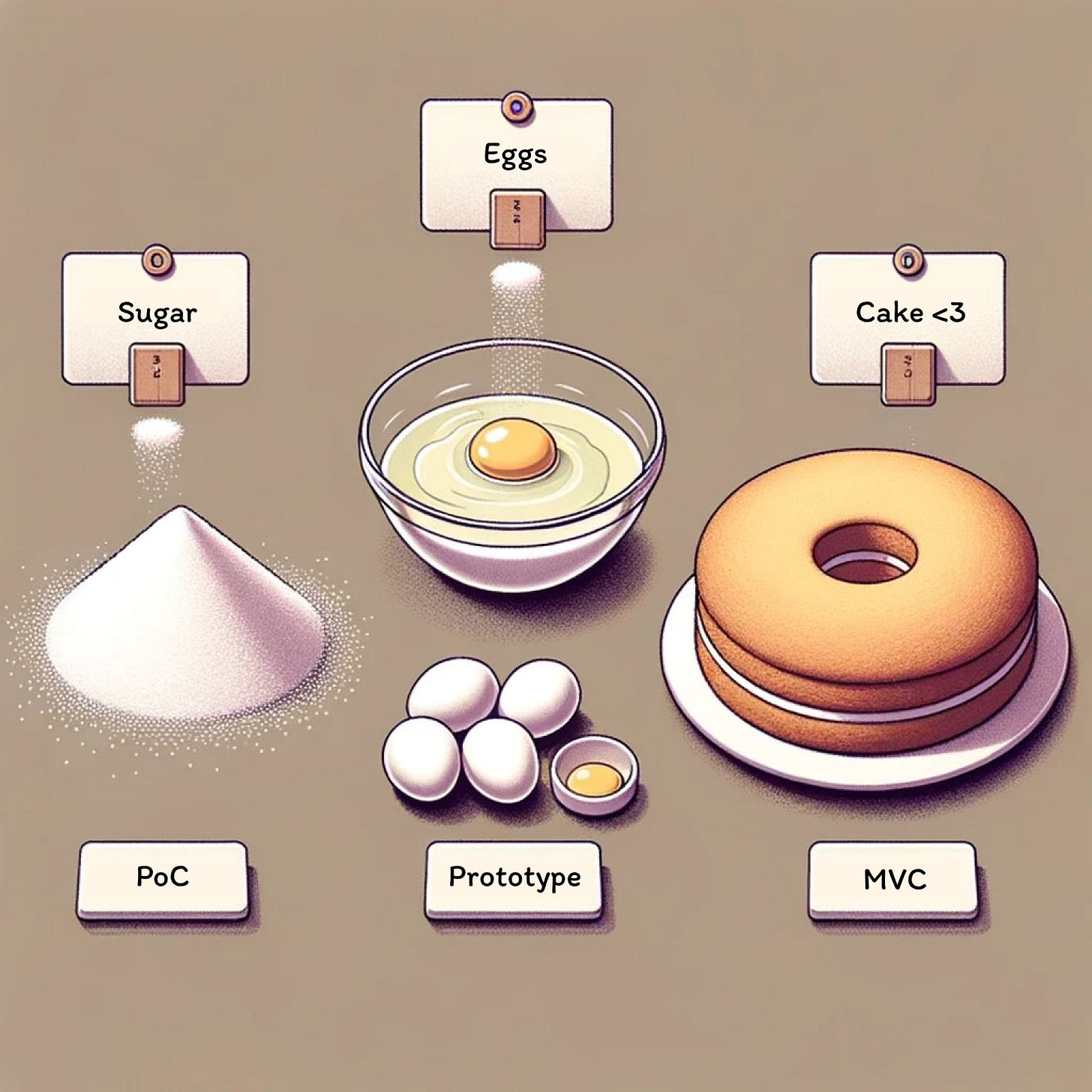Favourite Tech Startup Trio: MVP, PoC, and Prototype – Crafting Your Startup Journey
Unlock the secrets of tech startup success with our deep dive into MVP, PoC, and Prototype stages. Illuminate the path from an innovative idea to market readiness, tailored for aspiring entrepreneurs
Good morning my dear tech enthusiasts! Did you ever wonder about the difference between an MVP, PoC, and a Prototype? I mean, they're all the same... right? Yes, but not quite..
I bet many of you have been thinking about creating something of your own, and this guide may be the first step towards that beginning. But before we dive in, let's remember that each of these has a specific goal, and the results are always vary. Additionally, as we explore these concepts, we'll also uncover the essential steps to build your own successful startup, guiding you from idea to execution.
PoC (Proof of Concept)
Think of this as the "baby step" of the tech world. It tests just one specific aspect. Imagine you're baking and you're testing if the new sugar you bought actually sweetens. The result? Not a cake, but an understanding of that sugar. In tech terms, it's an architectural or analytical artifact. Outcome? Insight and understanding, but not a complete product.
Prototype
So you've tested the sugar and now you're testing flour, eggs, and other ingredients. But still no cake. This is what a prototype does. It tests multiple aspects but doesn't give you a full-fledged product. Outcome? A clearer vision of how different components might work together.
MVP (Minimum Viable Product)
Ah, now we're talking! This is where you get a basic, no-frills cake. It might not have the fancy icing or decorations, but hey, it's still a cake. An MVP isn't about analysis but actual implementation. It's a real, tangible product built based on upper concepts. Outcome? A functional product that users can interact with.
In conclusion, only the MVP emerges as a real, hands-on product. PoC and Prototype take a step back, acting as the foundational blueprints that yeild the architectural or analytical artifacts.
The Startup Path from Scratch to MVP
Let's see how a typical startup journey unfolds from the initial concept to the development of a Minimum Viable Product (MVP):
The process often begins with an entrepreneur or a team recognizing a problem or a need in the market. This idea usually stems from personal experience or observation, ensuring a deep understanding of the problem;
The next step involves engaging with potential users. This is crucial as it guides the direction of the MVP. By talking to a specific user group, the startup gains insights into the real-world application of their idea and the core problems that need addressing;
Before building an MVP, the team may create a PoC. This stage involves testing the feasibility of the idea to ensure the concept is viable. The PoC is primarily for internal validation rather than for user interaction.
Following the PoC, a prototype is developed. This is a more advanced version used to explore how the product might work. It's more detailed than a PoC and can be shared with users for early feedback, but it is still not a market-ready product.
With all information collected, the startup proceeds to develop a lean MVP. This MVP focuses on the most essential functionality necessary to solve the core problem for the target users. For example, Airbnb's initial version was a basic website without payment integration or a map view. The key is to start simple and focus on the problem, not the features.
The goal is to launch quickly. The first version of the product doesn’t need to be perfect; it needs to be functional enough to start the learning process. Getting the product into the hands of users as soon as possible is more important than refining it in isolation.
Once the MVP is launched, the startup should focus on gathering a small group of initial customers. This early user base provides valuable feedback and insights into how the product is being used and its effectiveness in solving the problem it was designed for.
The next phase is the feedback loop. Regular interaction with users post-launch is vital. This feedback should inform continuous iterations and improvements to the MVP. It’s important to focus on enhancing the solution based on user feedback, rather than just adding features.
Throughout this process, the startup must balance its vision with practicality. While the long-term vision might be grand, the MVP should be a smaller, more practical version of this vision, addressing the most critical aspects of the problem at hand.
Congratulations! You're now officially CEO of your own startup!
Alright, so you've got your startup off the ground. That's just the starting line, though! The real fun is just about to begin! Now's the time to dive in and really enjoy the journey. You're going to pick up so much along the way, fine-tuning your product and perhaps taking a few unexpected turns!
And hey, as you start or thinking to start on this new chapter as an entrepreneur, I'm sending heaps of luck your way! Remember, every challenge is a chance to grow, and every success, big or small, is a step forward. So, keep your spirits high and your goals in sight!



